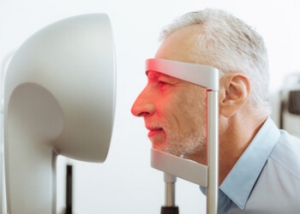Cataract Symptoms – Understand What Signs To Look Out For
Cataracts are a normal part of ageing. Many people are worried that being told they have an early cataract means impending vision loss and blindness, but modern cataract surgery is a highly successful procedure in our developed society.
Mild cataracts often do not cause any noticeable cataract symptoms. In fact, some people with even moderate cataracts often go about quite happily in their daily activities, unaware that their slight vision changes are attributable to cataract symptoms.
A cataract is an opacity in the crystalline lens of the eye, which is usually clear and transparent to allow the transmission of light to the back of the eye for vision. When there is a cataract present, incoming light is blocked or scattered, resulting in the characteristic symptoms of a cataract.
Cataract Symptoms to Look Out For
The symptoms of a cataract will vary depending on the type of cataract, its location, and how advanced it is. In most cases, cataract surgery is only indicated once these cataract symptoms reach a point where they are significantly impeding an individual’s ability to confidently perform their usual tasks, such as driving or reading. Very rarely does a person experience complete vision loss from a cataract – in Australia, the design of our medical system allows for a patient to access cataract surgery usually long before this happens.
It can be difficult to identify the symptoms of a cataract as many people will simply dismiss their vision changes as part of normal ageing. In a way, this is accurate as cataracts themselves are a normal part of ageing. The symptoms of a cataract are also not unique to cataracts and can potentially be a symptom of a more serious eye disease that could result in real vision loss. Therefore, it is important to always get checked by an optometrist or ophthalmologist if you ever feel there’s something not right with your eyes or vision.
 The following are typical symptoms of a cataract.
The following are typical symptoms of a cataract.
- Hazy vision. You may also describe your vision as filmy, blurry, or cloudy. Many people will feel their vision is like looking through a dirty window and in fact, some will constantly try to clean their glasses, believing that smudged lenses are to blame!
- Glare sensitivity. The opacity in the lens causes incoming light rays to be scattered, which is what the eye perceives as glare. This glare sensitivity, also known as photophobia, can be mild discomfort or it can be severe enough to cause some to avoid driving at night. You may notice this photophobia in situations such as when faced with oncoming car headlights or when reading LED or backlit signs.
- Reduced contrast sensitivity. This may be apparent in situations such as trying to read coloured text against a coloured background or fine print in dim lighting. You may also find you feel less comfortable driving in low contrast conditions, such as in the rain or at dusk.
- Needing to update your glasses or contact lens prescription more frequently than usual. The formation of a cataract can often result in an alteration to the refractive index of the crystalline lens in the eye, meaning that light is bent through the lens to a different degree compared to pre-cataract. A certain type of age-related cataract known as nuclear sclerosis is known to cause a “myopic shift”, resulting in a prescription becoming more short-sighted. Conversely, another type of cataract known as an anterior cortical cataract can sometimes cause a prescription to shift towards more long-sightedness.
A cataract will never cause pain or the eye to appear red. The symptoms of a cataract will develop very slowly over time, though some types of cataract may grow relatively faster than others (such as those induced by steroid medications or trauma). It is not possible to one day wake up with sudden vision loss from a cataract – any such event should be treated as an emergency.
When Is It Time for Cataract Surgery?
Cataract surgery is one of the most common surgical procedures in Australia. Many patients, once told they have a cataract, are concerned about the timing of cataract surgery – does it need to be done immediately or can they hold off for a bit longer?
For the vast majority of people, cataract surgery is only necessary once your vision is really not adequate for what you need to be able to see. Though that may sound a bit strange, cataracts are not a malignant growth and once they are removed, your vision is more or less restored to the clarity you once enjoyed before the cataract began developing. The point when someone feels their vision is ready for surgery can differ from individual to individual – for example, someone who enjoys cross-stitching or birdwatching will be bothered by their cataract much sooner than someone whose hobby or vocation is cooking or running.
In some cases, your ophthalmologist or optometrist may strongly recommend you proceed with cataract surgery sooner rather than later. This may be because the presence of the cataract is putting you at risk of glaucoma, if the cataract is becoming “hypermature”, which can make delayed cataract surgery risky, or if your vision no longer meets Australian driving standards, even if you feel like you can still drive safely.






Leave a Reply
Want to join the discussion?Feel free to contribute!